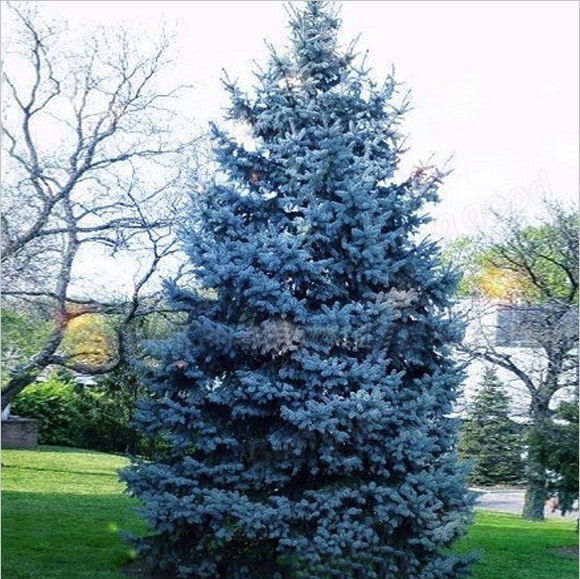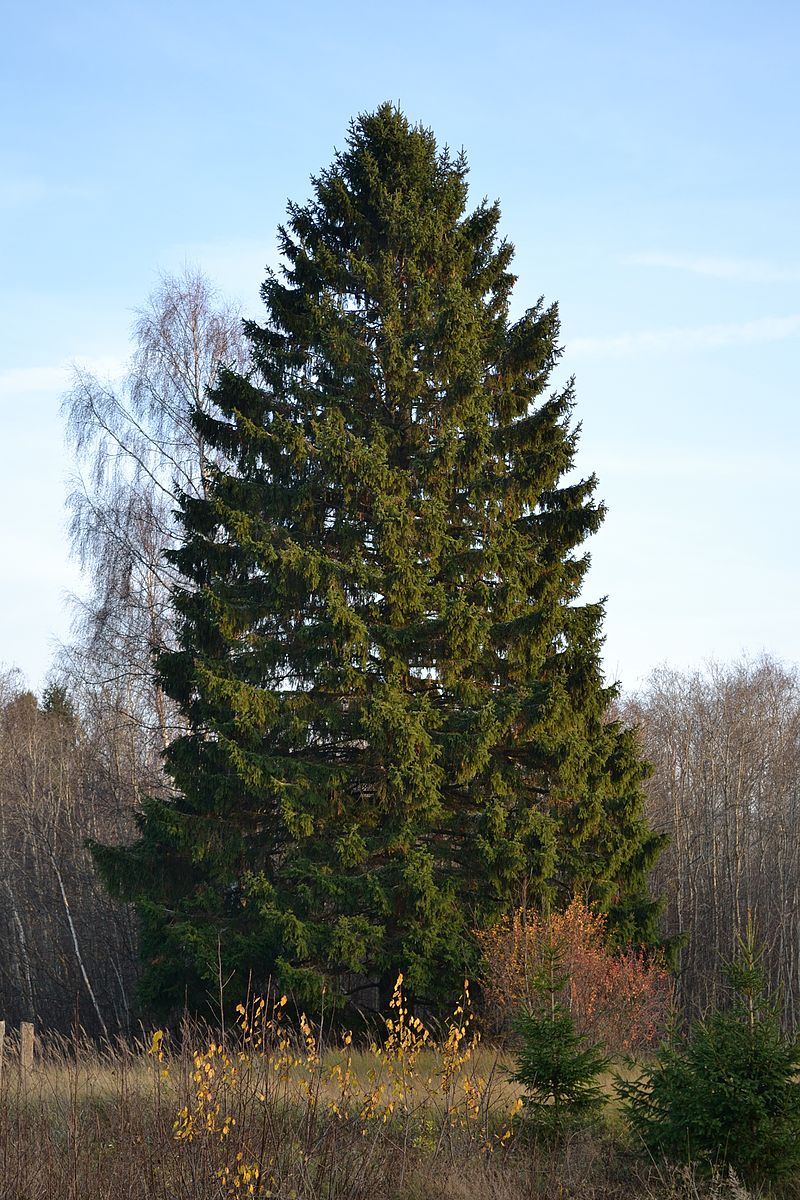Colorado blue spruce (Picea pungens) is an evergreen tree widely planted in residential gardens in Wisconsin. Its structural, columnar form is commonly used to build windbreaks or privacy screens in backyards throughout the United States. The year round blue-green coloration provides winter interest in the Midwest garden.
Colorado Blue spruce is a commonly planted specimen tree.
This spruce originates from the Rocky Mountain regions of the west and is Coloardo’s state tree. It can grow to be 60’x25’, with short, sharp needles. It’s Latin name pungens, refers to the needle-like quality of the leaves, which anyone who works around these trees knows well!
Needle Cast Disease
The Colorado Blue Spruce often loses its rigid needles after wet seasons. The Rhizosphaera fungus, which thrives in the wet conditions, leads to the needle loss as it takes hold of the spruce. The tree will commonly become infected near the bottom of the tree, which tends to accumulate more moisture due to the lack of sun and wind exposure.
A common symptom of Needle Cast disease is the needles changing color from green to violet and then brown. Needle loss tends to progress from the bottom of the tree, upwards. You can check for signs of the fungus by checking the leaves for a black, sooty texture.
Telltale symptoms of Rhizosphaera Needle Cast
Recommendations
To avoid Needle Cast in Colorado Blue Spruce, provide ample space for the mature size of the tree at planting. If these trees are planted too closely it will increase the moisture level, which can lead to needle cast infection. We have noticed these trees do better on hills or exposed areas, including areas that experience regular breeze/wind. As a preventative measure, an arborit can remove the lowest branches of the tree to increase airflow.
If you have multiple spruces, it may be wise to remove an infected tree, so the Rhizosphaera fungus does not spread to the others. Whether you have one tree infected or all your trees are, you can investigate chemical treatments, or leave them in their thinned state, as their wood is not compromised.
If you plan to remove an infected tree, then check out these alternatives to replace your blue spruce.
Alternatives to Colorado Blue Spruce
1. Black Hills Spruce (Picea glauca) is naturalized to areas in Wisconsin and has a similar form to the Colorado Blue Spruce.
2. Black Spruce (Picea mariana) is another Wisconsin forest tree that would be a welcome addition to your garden.
The Norway spruce is a more resistant species alternative to Colorado Blue Spruce.
3. Norway spruce (Picea abies) hails from Europe and is known for its melancholy, drooping branch structure. It is more resistant to Needle Cast.
Wisconsin is a state with a wealth of native evergreen trees. It’s always unfortunate losing a beloved tree, which is why we’ve included some additional sources to help you select the right tree for your site.
Further Reading
Forest Trees of Wisconsin
Wisconsin Native Plants
Native Plants of Wisconsin Book



